Women's, children's and men's sweaters can be knitted from thick or thin yarn using openwork patterns, elastic or beautiful complex arans.
Made according to patterns with knitting needles from alternating front and back loops, supplemented with yarn overs, crossed or dropped loops, they vary in complexity and technique.
Necessary tools
A beautiful knitting pattern for a sweater is created by alternating the constituent elements of the chosen technique using thin, medium thickness or thick wool yarn.

Materials required:
| Threads | For knitting sweaters, you can use cotton, wool, acrylic or gradient yarn, and its choice will primarily depend on the seasonality of the product and the chosen pattern:
For work, regardless of the type of thread, it is recommended to choose only high-quality yarn produced by companies
Containing, in addition to wool fiber, also a small amount of synthetic threads, it allows the product to be made softer, more wear-resistant and pleasant to the body. |
| Spokes | You can knit sweaters on straight, circular or shuttle needles, and their size will also depend on the type of product:
· When knitting openwork patterns, thick knitting needles are used; · Volumetric rib sweaters are knitted with tools 1-2 sizes smaller than recommended by the seller. This will make the pattern more voluminous. |
| Other tools | · scissors;
· knitting marker; · needle; · ruler |
Master classes
Knitting sweaters involves working with simple or complex patterns, used either entirely for the product or as decoration, complemented by elements of garter stitch.
Stockinette stitch
Stockinette stitch is a simple, basic pattern used to create warm sweaters, consisting of alternating rows of knit and purl stitches.
It is knitted in a circle from thick woolen (for example, ALIZE SUPERLANA MIDI 100 g/150 m) or semi-wool, with the addition of acrylic (for example, Lana Gold Alize with 49% wool and 51% acrylic, density 100 g/240 m) yarn.
The pattern consists of 2 rows knitted in a circle, with the initial set of loops being a multiple of 2 (+ 1 additional loop).
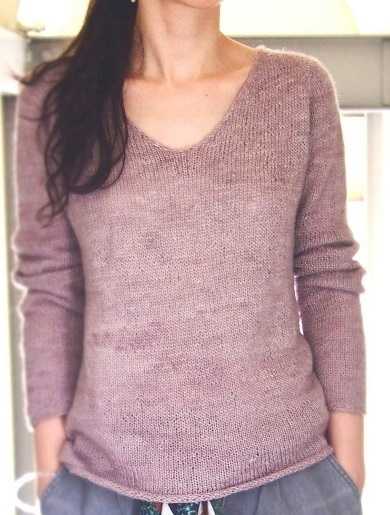
After this follows:
- Row 1 (front) is completed entirely with front loops. Place a marker to mark the end of the row and turn the piece over.
- in the same way, knit the 2nd (purl) row to the marker and turn the knitting again.
- Turning the work over and knitting rows with garter stitch, you need to knit the sweater to the desired size.
You can also knit a sweater with the stockinette stitch on straight knitting needles, but in this case, in addition to the initial set of loops, which is a multiple of 2, 2 more are added to form the edge. (abbreviations used: LP - front loops, IP - purl, CP - edge).
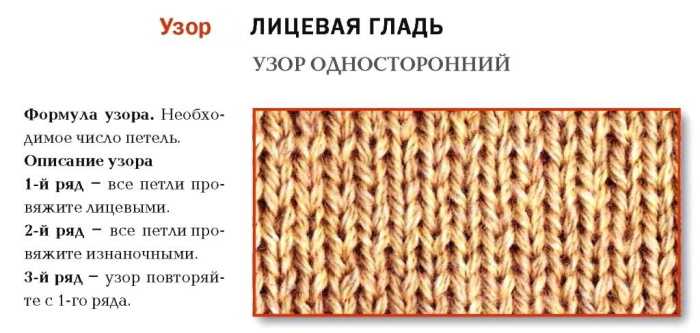
When working on a pattern you need to:
- Remove 1st stitch and knit the entire row LP.
- Turn the knitting over and also remove the CP in the 2nd row and make it completely IP. The last loop in it should also be made LP.
- In the 3rd row, remove the CP and make its LP, and in the 4th, repeat the pattern of the 2nd row.
A blouse made with the stockinette stitch may curl a little. This can be avoided by adding a 2*2 elastic band to the pattern.
Gradient pattern
Garter stitch is also used when knitting sweaters with a gradient pattern. This is done in 3 threads of yarn, 3 shades, made in the same color scheme (for example, white, light blue and dark blue) or contrasting colors. Circular knitting needles are used for work.
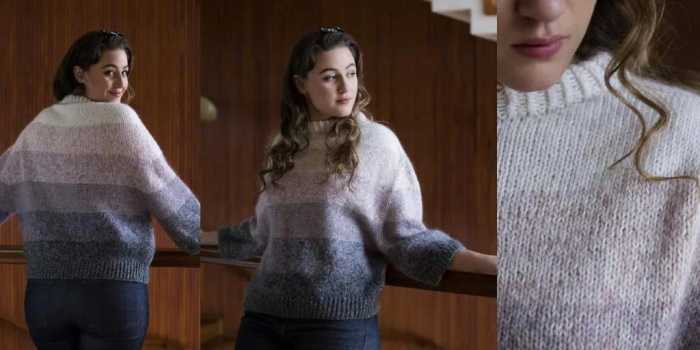
Abbreviations used in the master class: LP - front loops.
When making a pattern you need to:
- Using dark blue yarn, cast on a total number of stitches divisible by 2 (+ 1 extra). Close the knitting in a circle.
- 1st row: knit stitch and mark the turning point with a marker.
- Turn work over and continue knitting LP in the 2nd (purl) row to the marker mark.
- Proceeding by analogy, you need to complete 15-17 rows in 3 threads with dark blue yarn, after which you can start knitting the gradient. To do this, you should cut one of the dark blue threads with scissors, and tie a light blue thread to the remaining end of the yarn.
- Continue knitting with 2 dark blue and 1 light blue threads, and complete 2 rows of the product, then cut off the 2nd dark blue thread, tying the light blue thread to its end.
- Using 2 light blue and 1 dark blue thread, complete 2 rows of the product and replace the third dark blue thread with a light blue thread.
- Working with 3 blue threads, you need to complete 15-18 rows of the sweater, and then gradually introduce a white thread into the knitting. This should be done in the same way as with blue yarn, alternately replacing one blue thread in the knitting with a white one.
- After completing the gradient, you need to continue working on the sweater with completely white yarn.
Rice knitting
A beautiful knitting pattern for a rice sweater, or pearl knitting, is created by alternating front and back loops.
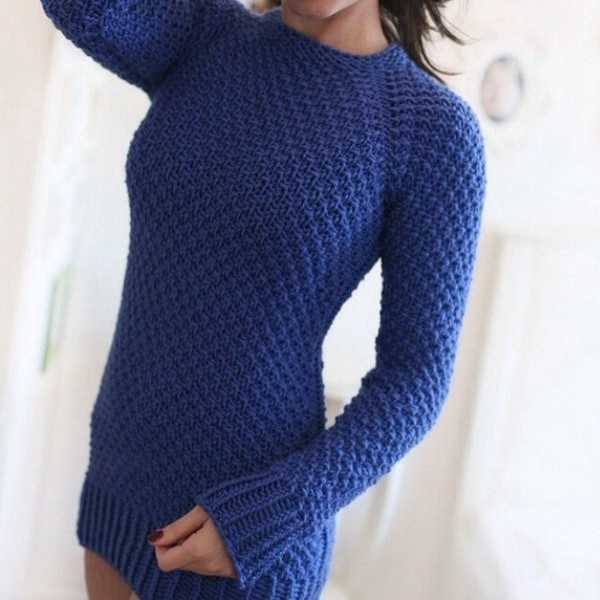
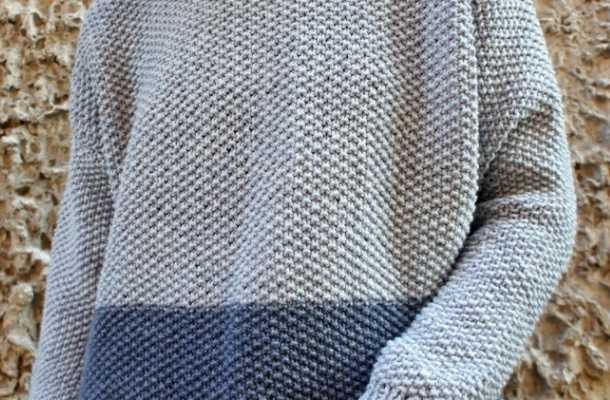
Having received its name due to the pattern, which looks like small rice, often scattered over the surface of the product, it belongs to two-sided, three-dimensional patterns and is often used when knitting voluminous winter sweaters.
For knitting, it is recommended to use medium-thick yarn (for example, Alize Lana Gold with 49% wool and 51% acrylic, density 100 g/240 m) and circular or straight knitting needles of the appropriate size.
The pattern consists of 2 loops in 4 rows, and it is performed with an initial set of loops that is a multiple of 2.
Work scheme:
- 1-2nd row – rapport – 1 LP + 1 IP (abbreviations used – LP – front loops, IP – purl).
- 3-4th - pattern - 1 IP + 1 LP.
- The knitting pattern must be repeated throughout the entire circle.
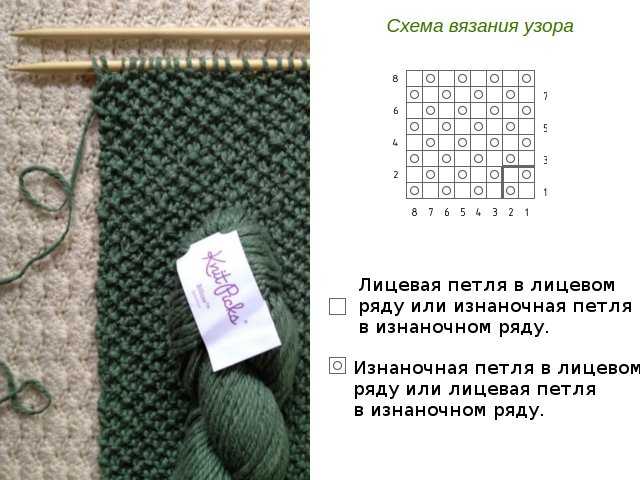
Rice knitting can be used for knitting women's, men's and children's sweaters, as an independent pattern or as the main one, supplemented with other, voluminous patterns.
"Boucle"
A beautiful knitting pattern for a boucle sweater (boucle pattern or rosehip pattern) is based on the knitting technique of the "front surface". In this case, to create "bumps" that give relief to the pattern, knitting 5 loops from one main loop is used.
This is done using yarn overs and loops thrown unknitted onto an additional knitting needle. After that, they should be knitted with one purl.
If desired, the number of stitches knitted together can be reduced to 3, making the pattern more openwork, or increased to 7, which will make the pattern more voluminous and embossed. Abbreviations used: LP - front loop, IP - back loop.

To create the pattern you will need:
- Using knitting needles, cast on a total number of stitches that is easily divisible by 2.
- Complete the 1st row completely LP.
- In the 2nd row, perform a repeating rapport of 1 IP and a bump (bump), for which you need:
- First, add 5 straight yarn overs (made away from you) to 1 LP and knit them LP.
- Remove the stitches, turn the work over, return them to the knitting needle and purl (PP).
- Turn the fabric over again, knit these 5 loops with the front loop, turn it over again and make 5 loops with the back loops.
- Form a bump (bump) by turning the fabric to the front side again, knitting together 5 loops LP (front).
- You can complete the formation of the bobble in another way, for which the first loop is transferred to an additional knitting needle, the remaining 4 are knitted together, after which the first loop is pulled through the 4 knitted together.
- The 3rd row is done entirely in LP.
- In the 4th row, a rapport of 1 bobble (knitted from 5 loops with yarns) and 1 purl loop is knitted.
- From the 5th row the pattern begins to repeat from the 1st to the 4th row.
When knitting a pattern with straight knitting needles, each row must begin with an edge loop. It ends with face loops. When knitting a sweater in a circle, edge loops are not used.
When making the “boucle” pattern, knitting 3 loops from one instead of 5, you need to:
- Place loops on the knitting needles in a quantity divisible by 2 (+ 2 for the edge) and do the following:
- 1st row completely IP;
- In the 2nd row, knit 3 loops together purlwise, and then from one loop (exactly the same as 5) knit 3 loops (1 LP + yarn over and 1 LP).
- in the 3rd row, as in the 1st, use only the RP, and in the 4th row, first form 3 loops from one loop using 2 LP and a yarn over, and then knit the next 3 loops together purlwise.
- The 5th row repeats the pattern of the 1st and 3rd circles, and in the 6th, a rapport of 3 knitted together IP and 3 loops knitted from 1 (LP, yarn over, LP) is performed.
- Starting from the 7th row, knitting of the sweater continues according to the pattern, with a constant repetition of the patterns of the 1st-6th rows.
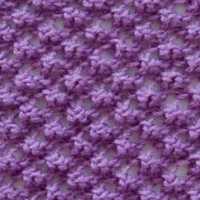 | 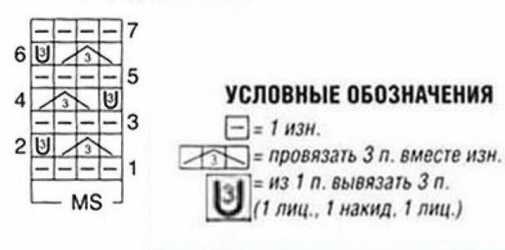 | 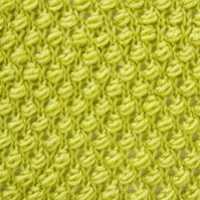 |
The boucle pattern can be used as the main design or combined with the stockinette stitch, 2*2 or 3*2 elastic. It can also be used to decorate the collar, cuffs, neckline or sleeves of a blouse.
"Shell"
A beautiful knitting pattern for a "shell" sweater can have several design options. It refers to openwork patterns obtained by knitting together several loops stretched out due to dropped yarn overs.
It can be used for knitting spring and summer sweaters, cardigans for adult women and girls, as well as small children from medium-thickness yarn (for example, Alize Superlana Midi from 25% wool and 75% acrylic, density 100 g / 170 m).
You can use straight or larger circular knitting needles for the work. The pattern repeat consists of 18 loops + 1. Abbreviations used: ЛП – front loop, ИП – purl, КП – edge.
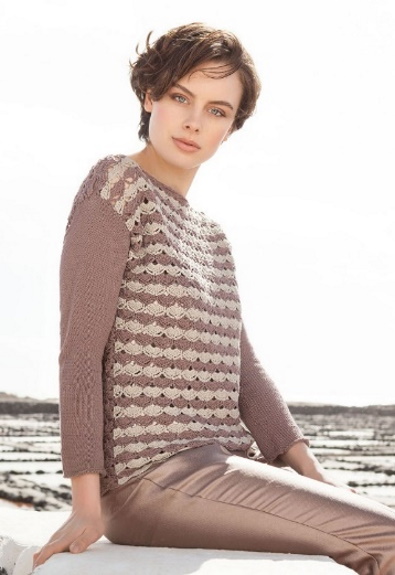
In this case, you need to:
- The first 2 rows are done entirely in LP.
- 3rd row - KP + after a double yarn over (this is done using the working thread, wound 2 times counterclockwise on the knitting needle) + 2 loops knit together IP + 13 LP + 2, knitted together IP + double yarn over + 1 LP.
- The 4th row is made with LP, and the double yarn overs in it consist of 1 LP and 1 IP.
- Rows 5-6 are knitted with front loops (FL).
- Row 7 – KP + repeating rapport – 2 yarn overs + 2 knitted together WS + 2 yarn overs + 2 knitted together WS + 11 LP + 2 knitted together WS + 2 yarn overs + 2 knitted together WS + 2 yarn overs + 1 LP.
- Row 8 – LP and 2 yarn overs: 1st – IP, 2nd – LP.
- Row 9 – only LP is performed.
- 10th row – KP + repeating rapport – 4 loops knitted together LP + 14 LP (after each of them you need to make 2 yarn overs on the needle) + 6 LP.
- Row 11 (shaping the shell) – KP + 2 yarn overs + 2 loops knitted together IP + 2 yarn overs + 2 loops knitted together IP + 2 yarn overs.
- The next 15 stitches should be transferred to a spare needle (or hook) and the yarn overs should be dropped, forming long loops through which the working yarn should be pulled.
- The resulting loop needs to be transferred to the working needle and first perform 2 yarn overs twice and 2, knitted together IP + 2 yarn overs + 1 LP. This pattern needs to be repeated when performing all the loops of the row.
- Round 12 – LP and double yarn overs, consisting of 1 IP and 1 LP.
- Then the work on the jacket is repeated, starting from the 1st to the 12th round.
The diagram of the above pattern:
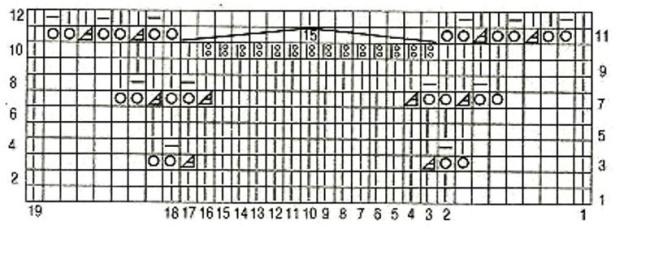
In it:
- Empty cells are used for clarity and are not taken into account when completing the drawing.
- │ — LP (facial);
- ̶ — IP (purl);
- O — yarn overs;
- A – 2 loops knitted together purlwise;
- OO - 14 front loops, separated from each other by double yarn overs.
The second version of the "shell" pattern is more embossed and can be used for knitting winter or autumn sweaters and cardigans. It is recommended to use yarn with the addition of angora wool (for example, Alize Angora Gold, density 100 g / 500 m).
Pattern diagram:
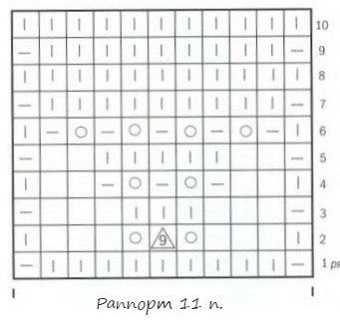 | 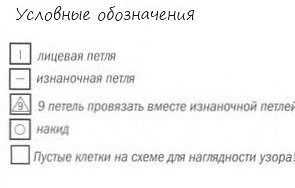 |
"Honeycomb"
This is a beautiful patent pattern knitted with patent stitches. Also called a mesh pattern or "mesh", it looks the same on both sides and can be used to knit women's and men's sweaters and oversized cardigans.
The disadvantage of the pattern is considered to be the almost complete lack of elasticity. It is recommended to use it for knitting warm things from woolen yarn.
The patent loop used as a base can be obtained in 2 ways:
- In the first case, you need to make a yarn over (you can make one, two or three yarn overs), and then remove the loop without knitting it.
- In the second case, you need to knit a loop from the row below, for which you need to insert a knitting needle into the selected loop located 1 or more rows below, grab it and pull the thread.

Patent patterns also include various elastic bands (for example, English and semi-patent). When making the "Honeycomb" pattern, the yarn overs should be placed on the front side of the product in the form of a grid.
In this case, you need to cast on any odd number of loops + 2 to form the edge (the abbreviations used are: LP – front loop, IP – back loop, KP – edge loop), and then do the following:
- 1st row - KP + rapport 1 LP + loop, removed with yarn over as IP. The pattern is repeated throughout the row, and it is finished with 1 LP + KP.
- 2nd row - KP + 1 LP and repeat the rapport 8-9 times - loop before yarn over, knit LP + yarn over, remove it as if it were a RP, pass the working thread behind the yarn over and make 1 LP.
- 3rd row – KP + repeating rapport – loop with yarn over, slipped as IP and 1 LP, made with yarn over. You need to finish the circle on 1 loop, slipped together with yarn over as IP.
- 4th row – KP + rapport – 1 LP + yarn over, remove as IP + 1 LP. You need to do it 8-9 times, and finish the row with 1 LP + yarn over, removed as IP + KP.
- Row 5 – KP + repeating pattern – loop and yarn over, knitted together as LP + loop and yarn over, slipped as IP. It is performed around the entire circle, and it must be finished on a loop and yarn over, knitted together as LP.
- As you continue to work, knitting the sweater continues with the pattern of rows 2-5 being completed in turn.
Using patent loops, you can also make a sweater with patent cables.
Pattern diagram:
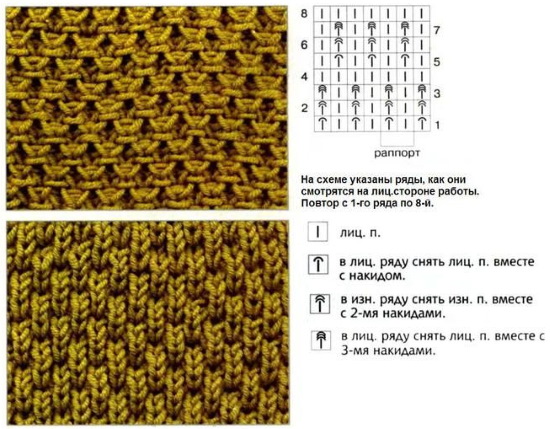
"Aranas"
A beautiful knitting pattern for an Aran sweater is folded into intricate braids. It owes its appearance to the classic Irish technique and is used for knitting warm men's and women's sweaters and sweaters.
It is recommended to use thick wool yarn for it (for example, Pekhorka Peruvian Alpaca with 50% merino wool and the same amount of alpaca wool, density 50 g/150 m) and knitting needles (straight or circular) 1-1.5 sizes smaller.
You will also need an additional knitting needle (or pin) for the work. The abbreviations used in the pattern are (LP – front loop, IP – back loop)
Pattern diagram:

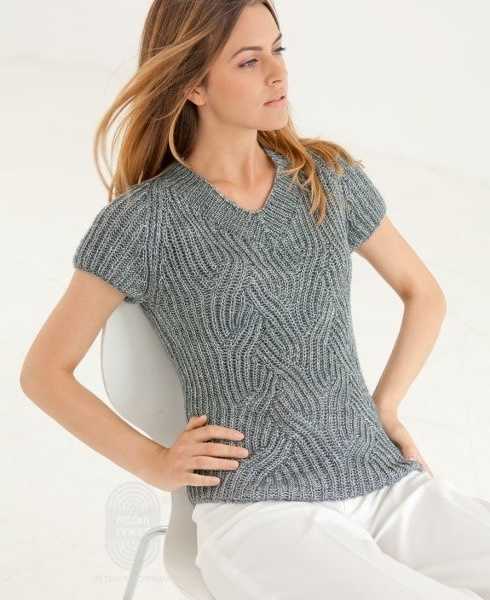
To work on it, you will need to cast on a number of loops that is easily divisible by 10 + 5 additional (there should be at least 24 loops on the needles), and then:
- In the 1st row – repeat the rapport 3 times – 2 IP + 4 LP cross to the right + 2 IP.
- The 2nd and all even (purl) rows must be knitted according to the pattern.
- In the 3rd row – 1 SP + 3 sts cross to the right and repeat the rapport twice – 4 sts cross to the left and 4 sts cross to the right + 3 sts cross to the left and 1 SP.
- In the 5th row, knit 3 sts crossed to the left and 1 IP, then repeat the rapport twice - 2 IP + 4 LP crossed to the left + 2 IP. The row should be finished with 1 IP + 3 sts crossed to the left.
- In the 7th row, do 2 LP and 2 IP, and then repeat the pattern 2 times - 4 sts crossed left and right. Finish it with 2 IP and 2 LP.
- Row 9 – repeat the pattern 3 times – 2 LP + 2 IP, then do 2 IP + 4 LP, crossed to the right + 2 IP and knit the pattern 2 LP + 2 IP twice more.
- Row 11 – 2 LP and 2 IP + rapport 4 sts cross first to the left, then to the right + 2 LP and 2 IP.
- Row 13 – 3 sts crossed to the right + 1 SP + repeating the pattern twice – 2 SP + 4 LPs crossed to the left + 2 SP. It ends with 1 SP and 3 sts crossed to the right.
- 15th row – 1 IP + 3 sts crossed to the right + 2 times completed rapport – 4 sts crossed to the right and left + 3 sts crossed to the right and 1 IP.
- Row 16 – knit 3 times 2 LP + 4 IP + 2 LP.
"Brioche"
The beautiful brioche pattern is obtained using a special technique for knitting English elastic, which involves creating a wavy relief for the sweater by constantly decreasing and increasing loops.
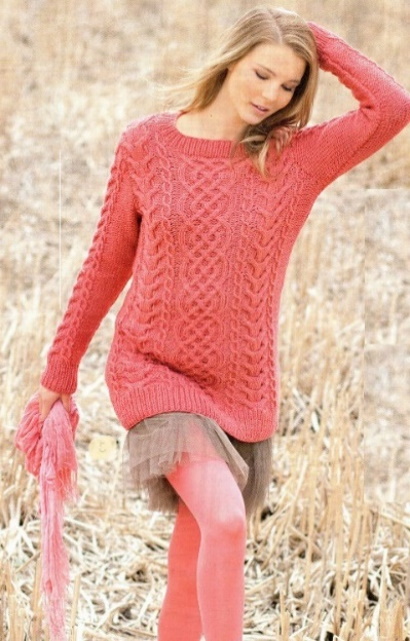
Having good elasticity, it can also be used for knitting children's clothes, and the most advantageous relief wave is obtained when working with 2 threads of different colors. Abbreviations used: LP - front loops, IP - back loops, KP - edge loops.
When working on a pattern you need to:
- Cast on a total number of stitches that is easily divisible by 16 + 8 (for symmetry) and 2 (for the edge), then do the following:
- 1st row - KP + rapport - remove the loop with a yarn over and 1 LP. Repeat it the desired number of times, then perform KP again and transfer the loops to the other side of the knitting needle.
- 2nd row – KP + rapport – 2, knitted together IP and remove with a yarn over. Repeat 7-9 times, then KP is performed and the product needs to be turned over.
- 3rd row (thread 1) – KP and rapport – 2, made together IP + slipped loop with yarn over. The last one in the row is placed KP, after which the work should be turned over.
- 4th row (thread 2) – KP and rapport – slipped stitch with yarn over + 2, knitted together LP + KP and turn the knitting over.
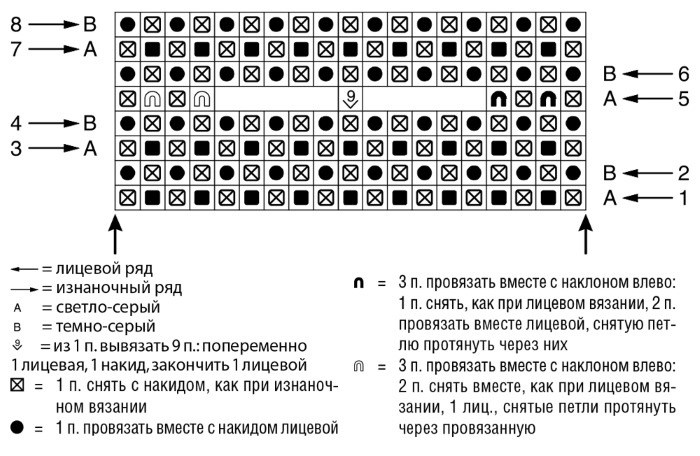
- Row 5 (yarn 1) — KP and repeat 7-9 times – slip stitch with yarn over + 2 stitches knitted together. Finish the row with KP and move the stitches to the other end of the needle.
- Round 6 (yarn 2) – KP + rapport – 2, knitted together IP + slipped stitch with yarn over. Finish the round with KP, then turn the knitting over.
- In rows 7-10 you need to repeat the pattern from the 3rd to the 6th circle.
- Row 11 should be knitted like row 3.
- In the 12th row – KP + brioche pattern + KP.
- Rows 13-14 should be completed like rows 5 and 6.
- From the 15th to the 22nd circle, you need to knit the pattern from the 3rd to the 6th circle.
- In the 23rd row, the pattern of the 3rd circle is performed.
- Row 24 – KP and repeat the rapport 7-9 times – remove the loop with a yarn over + 2 LP, knitted together + KP.
- Rows 25-26 are performed according to the pattern of rounds 5-6.
Jacquard
Jacquard patterns are traditionally used when knitting winter sweaters and cardigans decorated with multi-colored patterns. They look most advantageous with the use of Scandinavian motifs (snowflakes, deer, diamonds) and are suitable for adults and children.
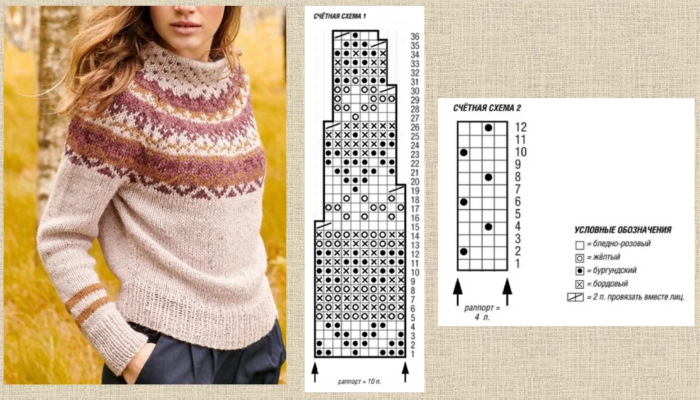
You can knit them with garter stitch in 2 different ways - with or without pulling through the loops:
- When performing the 1st method, some of the threads remain free on the back side. At the same time, they lie freely, without sagging or pulling the fabric together.
- The 2nd method involves creating long stretches on the back side of the garment. The free thread in this case should constantly cross with the working thread and thus be secured. This technique is most often used in the creation of children's clothing.
Sweaters and cardigans are made with a jacquard pattern from woolen yarn of different colors, and the knitting needles are also selected depending on the thickness of the threads.
Jacquard pattern diagram:
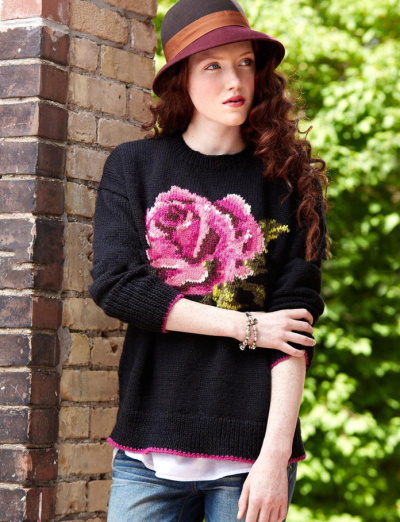
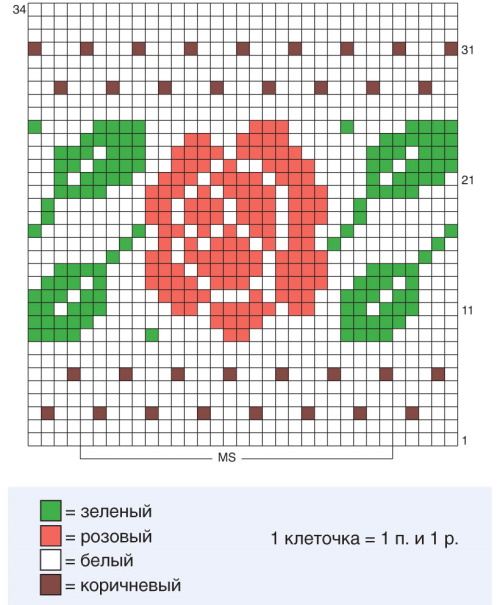
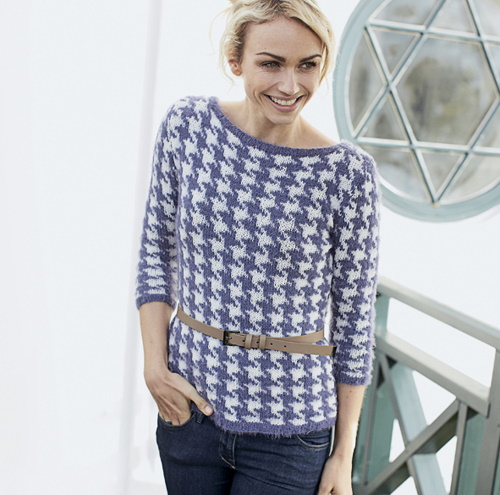
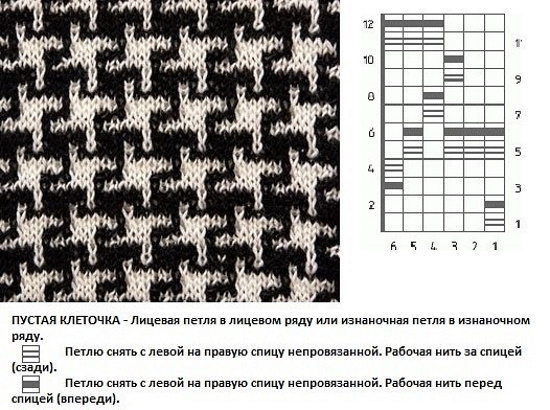
In jacquard knitting, only the stockinette stitch (FS) is used. Different colors of cells indicate the use of several colors of thread. When making edge loops, 2 shades of yarn are used simultaneously.
Tips and tricks
When creating your own sweaters, jumpers and cardigans, you can use any, both fairly simple and more complex relief patterns.
At the same time, professionals advise beginners:
- Use high-quality yarn in your work, choosing it depending on the type of product. For warm knitted products made with relief patterns, it is recommended to use thick wool yarn with the addition of synthetic fiber.
It is best to knit such items on knitting needles of a smaller size than recommended by the manufacturer, which will make the pattern more voluminous and embossed.
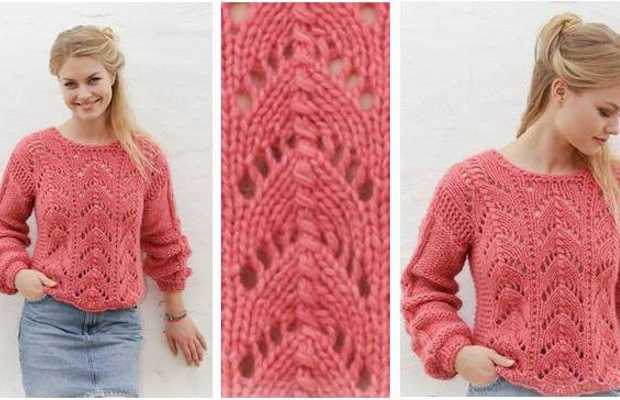
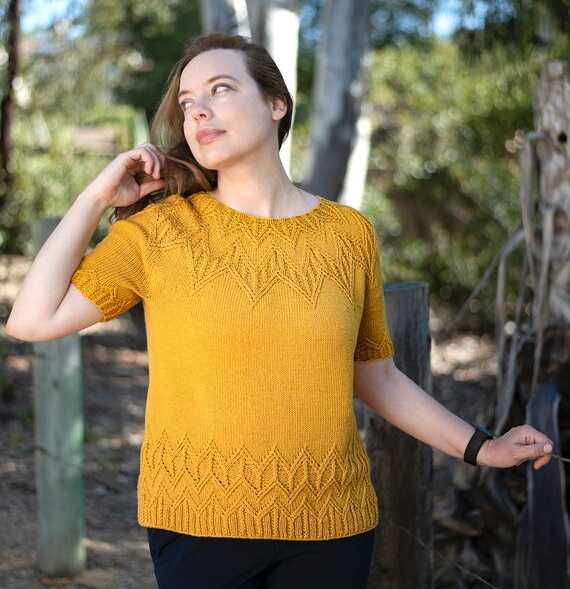 | 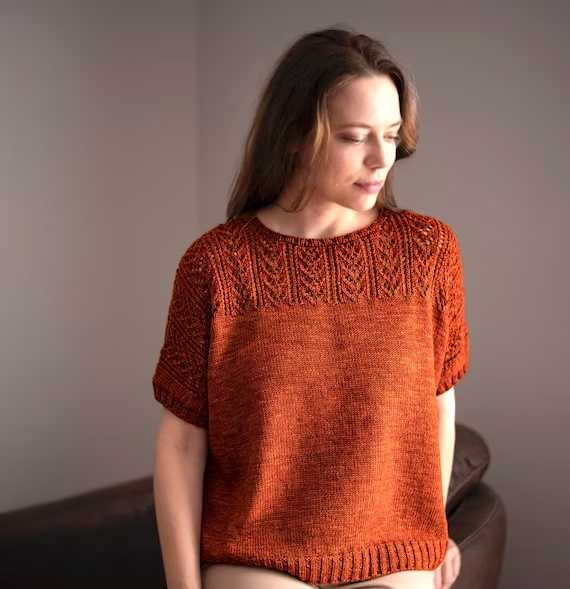 |
- For spring and summer sweaters made with an openwork pattern, you can take both thin woolen threads and cotton yarn. In this case, it is best to use thick knitting needles for knitting.
- When knitting with straight needles, it is necessary to add 2 loops to the initial set to form the edge. When working with circular needles, edge loops are not used. Instead, 1 additional loop is added to the total number of loops to connect the knitting into a circle.
- If you don't have enough experience, use simpler patterns for knitting (rib, rice knit, stockinette stitch), carefully reading the diagrams and always checking the rapport being performed. Later, you can move on to working with complex patterns (braids, arans).
- When knitting in the round, it is essential to use a marker to mark the beginning and end of each row. It will also be useful in cases where you need to urgently put knitting aside without knitting the entire working row.
- Get a notebook or a workbook, which will contain all the patterns used in knitting a sweater, calculations, the set of loops made, additional increases and decreases for beautiful openwork or relief patterns. It is also necessary to glue in it the labels removed from the skein of thread.
Video about knitting
Beautiful knitting pattern for a sweater:
